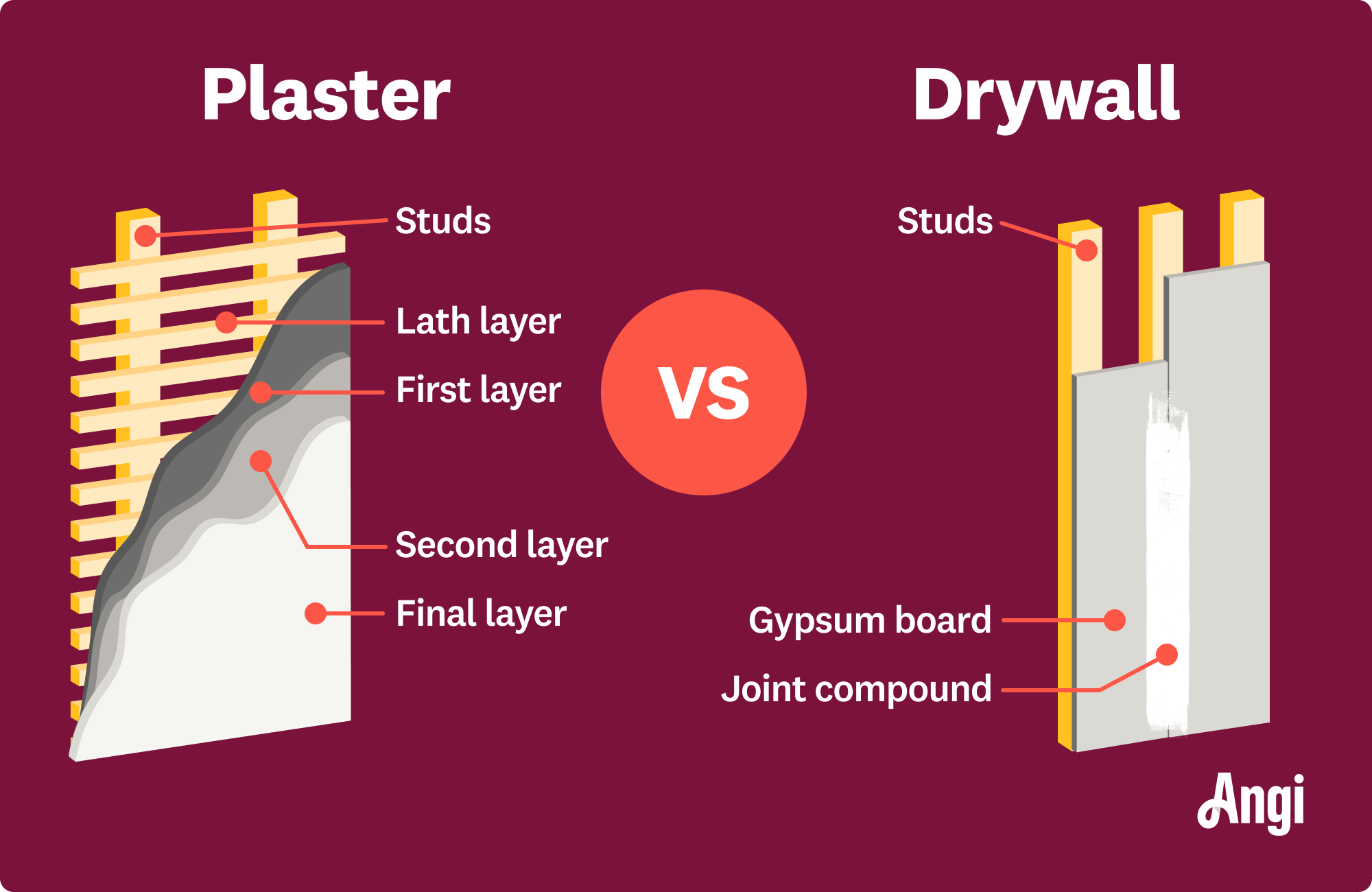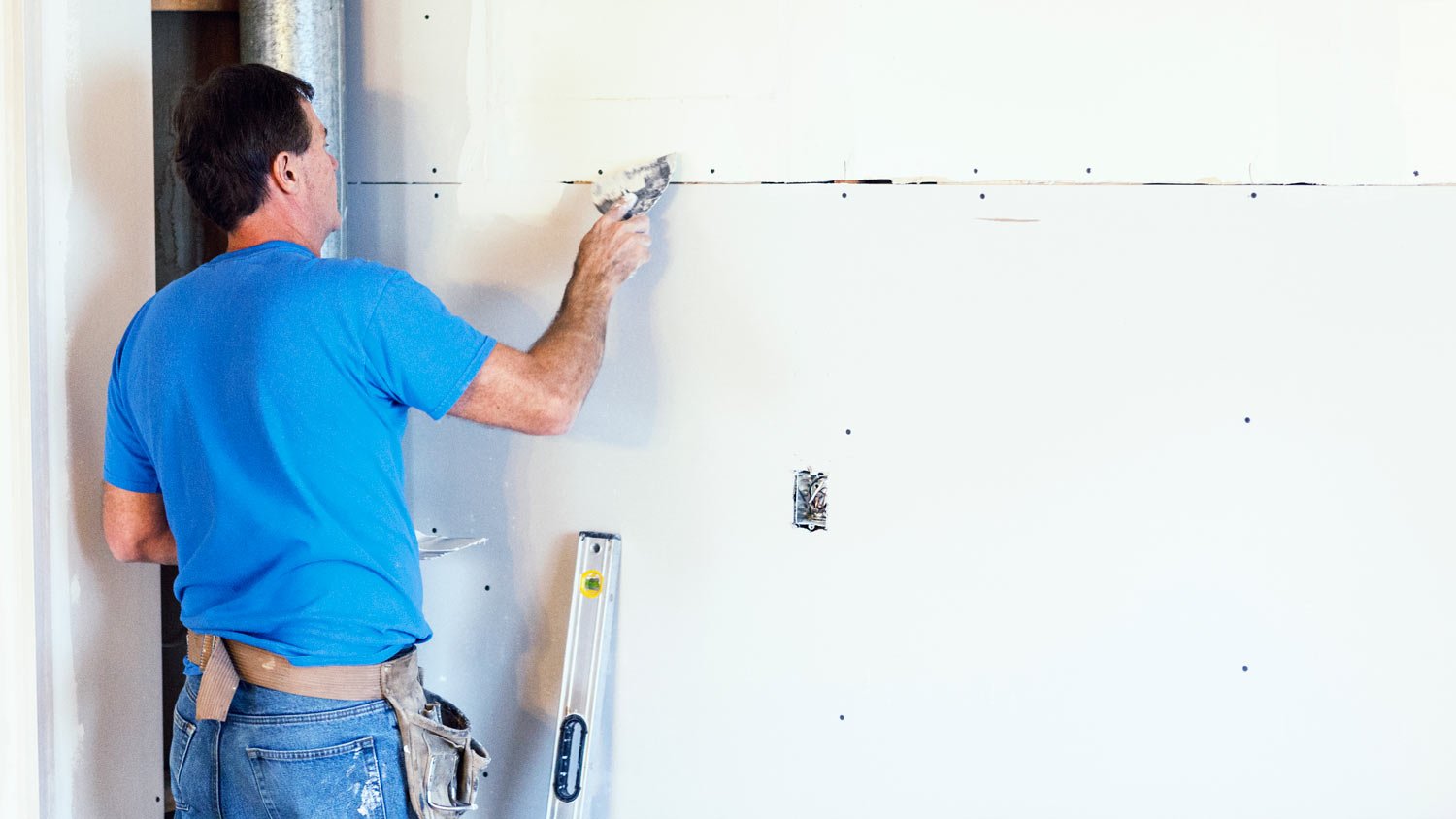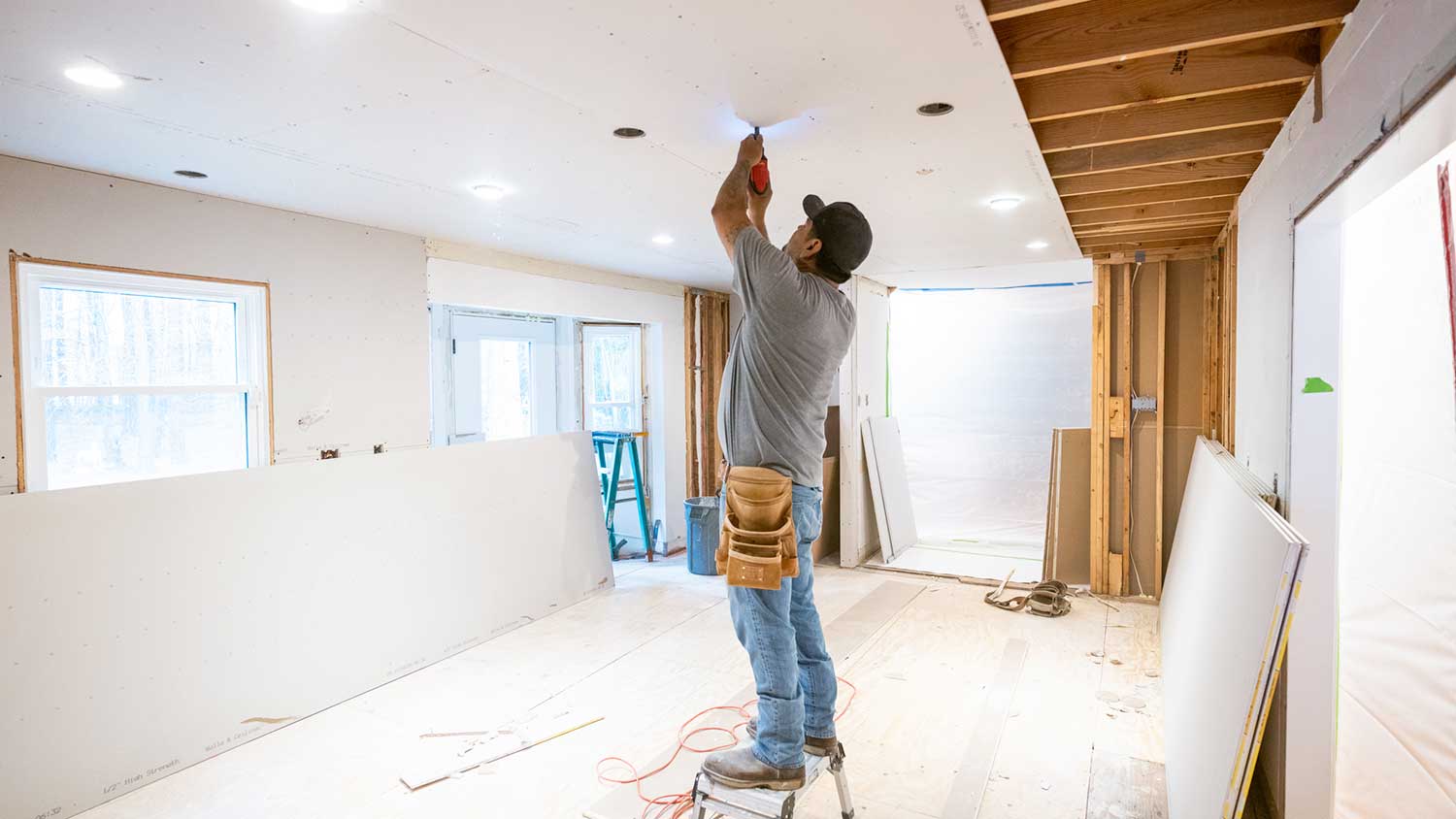
Pre-drywall inspection costs vary depending on the home size, build complexity, and reporting you receive. Estimate your budget with this cost guide.
Replacing plaster with drywall costs around $8,000, but it can increase depending on your project size and any finishing needed.


Swapping plaster for drywall is a time-consuming and expensive project that should be reserved only for special situations.
Load-bearing walls are more expensive to replace based on the labor required.
Demolishing the plaster costs 3x as much as drywall application, but DIYing is labor-intensive and requires special tools.
Although plaster is more dated-looking, it lasts longer than drywall and is of higher quality.
The cost to replace plaster with drywall averages $8,000, but it can range between $4,000 and $18,000. Replacing plaster with drywall isn’t the easiest DIY task. It involves removing an existing wall, evaluating the load-bearing beams, and then putting up a new wall. Afterward, the drywall requires a finish. Those purchasing an older home should think twice about removing plaster as it’s a longer-lasting material.
However, sometimes the plaster is damaged and needs to be removed, or a new homeowner simply wants a change. This involves demolition work and may require two specialized contractors. Read on to learn more about the cost of removing plaster and replacing it with drywall.

While the complexity of the work required doesn’t change much, it's important to remember that every wall in a house is different and will require a different approach. Removing plaster from a load-bearing wall will take much longer than removing it from a non-load-bearing wall. The age of the plaster will also factor into removal time. If you choose to finish the drywall, once it’s installed, you will need additional budget dollars for these materials.
For these reasons, many homeowners contract this work out to a general contractor, demolition team, or drywall installation company. If you're experienced with heavy tools, like sledgehammers and jackhammers, you can do the demolition work yourself, but be aware that damage to a load-bearing wall can cause significant damage to your home. For this reason, we suggest hiring a local drywall installation professional.
Many demolition teams, plaster specialists, and drywall installers will quote your project by the square foot. These are two different quotes, with the demolition cost being double or triple the cost of drywall installation. Like many other DIY projects, there is an economy of scale at play, so increasing the square footage will increase the total cost, but it should decrease the cost per square foot.
The following prices do not include drywall finishing:
| Wall Size (Square Feet) | Price Range |
|---|---|
| 4x8 | $350–$650 |
| 8x8 | $600–$1,050 |
| 10x8 | $720–$1,250 |
| 12x9 | $970–$1,700 |
Removing plaster and installing drywall shouldn't require specialized materials. Drywall is one of the most affordable wall materials available, and removing plaster is mostly elbow grease. We think it’s difficult to save too much money on the materials needed for this project, as they’re fairly basic, and using low-quality materials could lead to low-quality results.
Labor to remove plaster and install drywall takes the lion’s share of the budget. Removing plaster is extremely labor intensive and can often take days for a single wall. You can DIY the demo, but you’ll need to rent specialized tools and commit to the project.
Demo work can also be extremely fun but can wear you out quickly. Remember that you’re removing not just the plaster but also the lath behind it.
Here are some common labor costs associated with removing plaster and adding drywall:
Hourly rate for demolition work: $50–$100
Price per square foot for demolition work: $4–$17
Hourly rate for drywall installation: $50–$100
Price per square foot for drywall installation: $1.50–$3.00
General contractor project rate: $3,000–$18,000

You can get creative with drywall finishes and determine if you want to texture the wall, paint over the drywall, or add an interesting coat on top—maybe Venetian plaster. The least expensive option is to paint the wall, but it will also be the most simplistic. How you finish the drywall is up to you.
The cost table below details the pricing for the finishing only, not the plaster removal or drywall installation:
| Finishing Type | Average Cost (per Square Foot) |
|---|---|
| Primer and paint only | $0.50–$1.00 |
| Smooth finish | $1.00–$1.80 |
| Spray sand | $1.05–$1.20 |
| Venetian plaster | $3.00+ |
Handy DIYers may look at a project like this and know they can save quite a bit of money on labor. If you have the tools, the time—and more importantly—the experience, replacing a plaster wall with drywall is nothing too complicated. If you measure precisely and work carefully (for example, avoid damaging load-bearing beams), a skilled DIYer can complete this task for around 75% less than hiring a pro.
However, the work is highly labor intensive. If you don’t have the time, the skill, or the desire to take on a project that can take one week or more to complete, call a pro. The peace of mind knowing the job will be done right, while freeing you up for other tasks, is worth the cost. You can expect to pay around $8,000 for a large project if you hire a pro.
If you're purchasing an older home, think twice about replacing—or covering—plaster with drywall. While plaster may seem outdated or high maintenance, it's a longer-lasting material overall.
Before deciding to invest in a project like this one, including the demolition, drywall installation, finishing, and general contractor rate (if applicable), it’s beneficial to weigh the pros and cons of switching out plaster for new drywall.
The following table details the benefits and disadvantages of replacing plaster with drywall.
| Pros | Cons |
|---|---|
| Plaster can have a dated look | Removing plaster can become costly |
| Drywall may be a cost-effective option if plaster repairs are too expensive | Studs can be difficult to find behind plaster |
| Drywall has a clean, modern look | Plaster lasts longer, is of higher quality, and increases home value |
| It’s convenient to replace plaster if you’re also taking down walls to replace plumbing and electrical | It’s difficult to install drywall in an older home where walls and floors aren’t level |
| Plaster can contain asbestos, complicating removal |
If the pros outweigh the cons for your project, then replacing your plaster with drywall may be worth the cost. However, if your plaster walls are in good condition and the plumbing and electrical are in good shape, you can save money by not changing them out. Keep in mind that plaster walls are thicker, more durable, a better insulator of sound and temperature, and more resistant to water than drywall.

The cost of drywall installation doesn’t vary too much, as the materials are already fairly inexpensive, and even professional drywall installation is reasonably priced. Some tips to help you reduce your overall project costs include:
Negotiate the estimate with your contractor.
See if you can work alongside your contractor to save on labor costs.
Expand the project to include more space to save on the price per square foot.
Finish the drywall yourself.
Home is the most important place on earth, which is why Angi has helped more than 150 million homeowners transform their houses into homes they adore. To help homeowners with their next project, Angi provides readers with the most accurate cost data and upholds strict editorial standards. We extensively research project costs to develop the pricing data you see, so you can make the best decisions for you and your home. We rely on reputable sources, including the U.S. Bureau of Labor Statistics, academic journals, market studies, and interviews with industry experts—all to ensure our prices reflect real-world projects.
Want to help us improve our cost data? Send us a recent project quote to [email protected]. Quotes and personal information will not be shared publicly.
From average costs to expert advice, get all the answers you need to get your job done.

Pre-drywall inspection costs vary depending on the home size, build complexity, and reporting you receive. Estimate your budget with this cost guide.

Installing drywall is the most common way to finish your home’s interior. Use this drywall installation cost guide to see what your project is likely to cost.

Drywall texture can create an attractive finish and add dimension to your home’s walls. This guide breaks down the factors that influence the cost to texture drywall.

What is hot drywall mud and when do you use it in a home improvement project? Keep reading to find out when this material comes into play.

Thick gaps and extra joint compound can alter the look of drywall. So, should drywall be butt up against a wall? Review this guide for seamless installation.

Not sure whether to install Trusscore’s PVC panels or drywall? Comparing the costs can help. Let’s take a look at the typical Trusscore versus drywall costs.